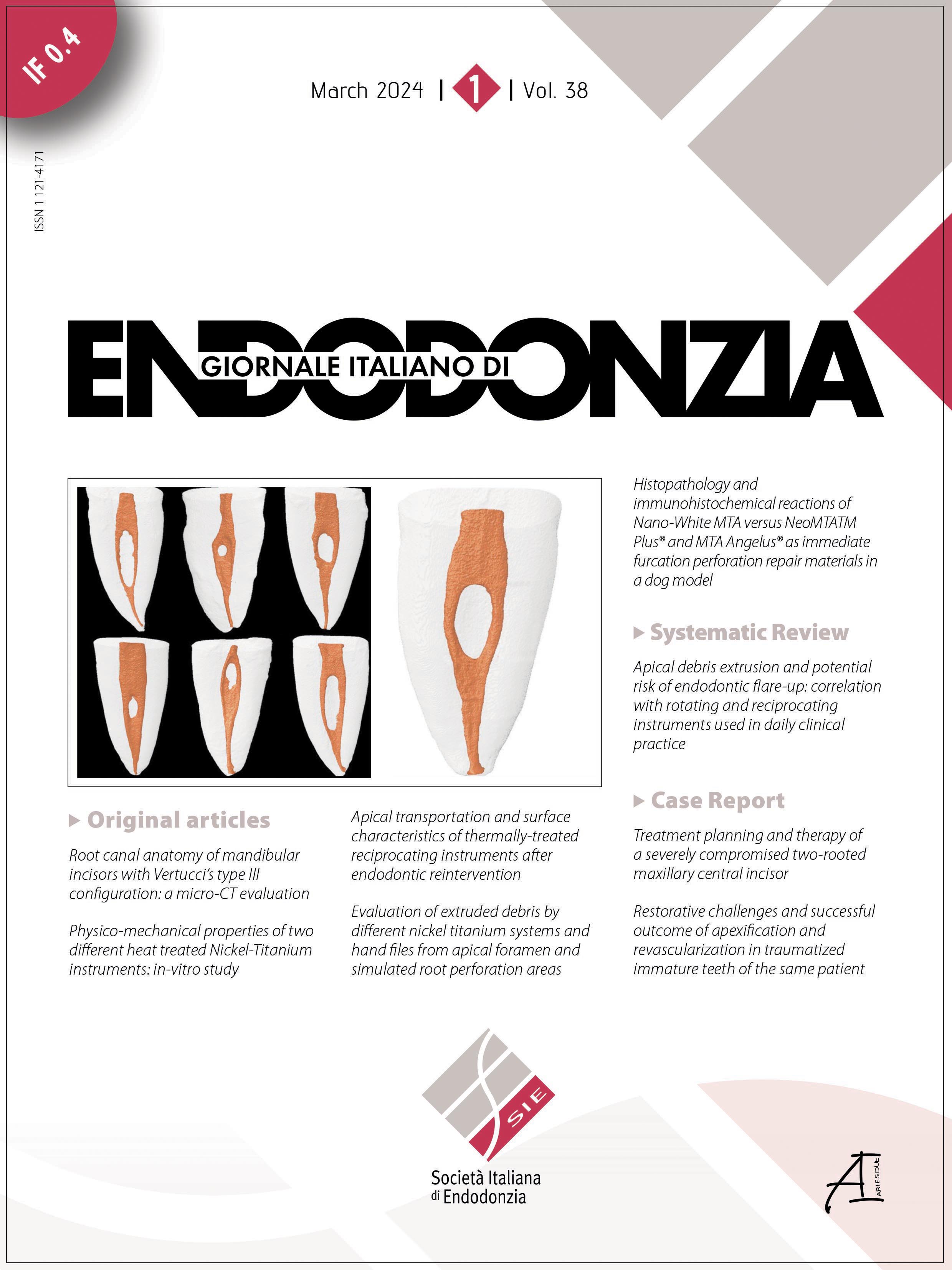Original Articles
Vol. 38 No. 1 (2024)
Evaluation of extruded debris by different nickel titanium systems and hand files from apical foramen and simulated root perforation areas
Debris extrusion from perforation

Publisher's note
All claims expressed in this article are solely those of the authors and do not necessarily represent those of their affiliated organizations, or those of the publisher, the editors and the reviewers. Any product that may be evaluated in this article or claim that may be made by its manufacturer is not guaranteed or endorsed by the publisher.
All claims expressed in this article are solely those of the authors and do not necessarily represent those of their affiliated organizations, or those of the publisher, the editors and the reviewers. Any product that may be evaluated in this article or claim that may be made by its manufacturer is not guaranteed or endorsed by the publisher.
Received: 22 May 2023
Accepted: 27 November 2023
Accepted: 27 November 2023
898
Views
259
Downloads












